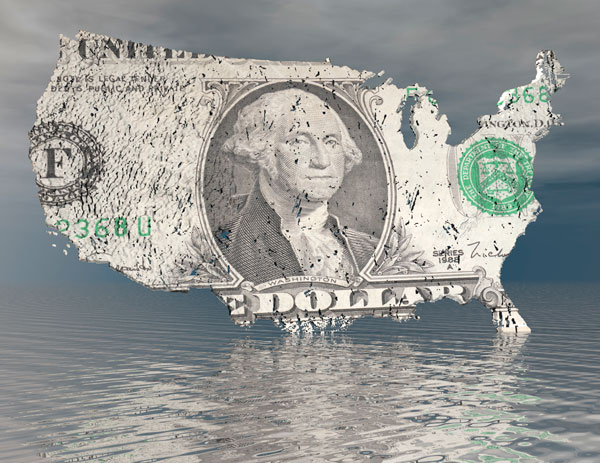Donald Trump will soon be sworn in as president after promising less regulation, tougher trade policies and more government spending on things like infrastructure, which could spur growth. But coupled with tax cuts, such moves could also expand government debt. At the same time, populist pressure similar to what put Trump in office is afoot in England and some European countries, pressing governments to turn inward and spend for the benefit of people who have felt left out by globalization.
Taken together, it looks like a formula that would lead to higher inflation, which in most developed countries has languished at below-average levels since the financial crisis.
In the U.S., a strengthening economy is already leading The Federal Reserve to pledge to continue to raise interest rates. The Fed is targeting an inflation rate of 2% — it’s currently about 1.7% and has been even lower in recent years. This month, the Commerce Department revised up GDP numbers for the third quarter – from 3.2% to 3.5% (annualized) — pointing to faster-than-expected growth.
The Fed’s hawkish stance is a sea change from only a few months ago, when there was much wringing of hands about growth and inflation being too low, says Wharton finance professor Itay Goldstein. “All of a sudden people are talking about infrastructure [spending] and cutting taxes and things that could lead to new growth and growing inflation.”
Politics and Inflation
Mark Zandi, chief economist at Moody’s Analytics, has predicted higher inflation and interest rates, more government debt and slower economic growth under Trump policies, and some other experts warn about the dangers of rejecting trade and international cooperation if the so-called “politics of rage” persist.
While most everyone wants stronger economic growth, some observers worry that anger among voters in various countries about the benefits of globalization could cause some developed countries to turn inward in ways that could hinder economic progress. They point to parallels between Trump’s win and the British vote last June to leave the European union, as well as movements in several European countries that signify disfavor with open trade and immigration policies, and a preference for protectionism and populism.
“Both the Trump and Brexit campaigns evoked fear and anger at immigration, free trade, and globalization and multi-cultureness more generally,” says Dan Kselman, academic director of the IE School of International Relations in Madrid, adding that, “both represent not so much the victory of a political party or a clear political platform, but rather rejection of the status quo political elite from both major parties, seen as corrupt and disconnected.”
If the result of that rejection is policies that favor more government spending on programs popular with the public, economies could grow. But Trump-style policies could be damaging as well, some economists say.
Wharton professor Kent Smetters has said that Trump has talked of reducing tax rates, especially for higher-income people — but also for businesses – that would stimulate the economy in the short run. The Penn Wharton Budget Model shows the impact of various assumptions. “In the short run, it creates some stimulus, but over the long run, you lose a lot of revenue,” said Smetters, a Wharton professor of business economics and public policy, of Trump’s business tax cut proposals.
The risk to the U.S. economy is that the tax cuts will lead the government to increase borrowing and thus further balloon public debt, which could compete with private capital for household savings and international capital flows, depending on whether the overall economy is at full capacity. In the Penn Wharton Budget Model, the short-term gains turn negative over time, and in fact become “very negative” over 10 years, Smetters noted.
Goldstein sees some of the same political and social trends in Europe that won Trump the election in the U.S., with many people thinking globalization has gone too far and that it puts international interests ahead of national ones. “I certainly think it’s a broad phenomenon. It’s not just the U.S. and U.K.,” he says. “There is clearly a backlash.”
Kselman adds, “Donald Trump has promised to repeal the Affordable Care Act, which gave millions of lower class and lower-middle class Americans access to health insurance. He has pledged to adopt traditional trickle-down economic policies, such as the reduction of corporate taxation, that have contributed to increasing American budget deficits, increasing international debt, and the increasing marginalization of the American industrial working class.”
As such, Kselman continues, “Donald Trump’s economic policies are not likely to help the working-class whites who carried him to office.”

